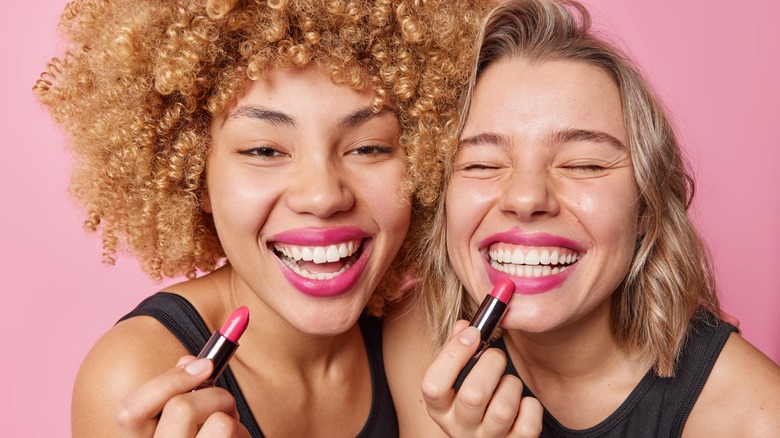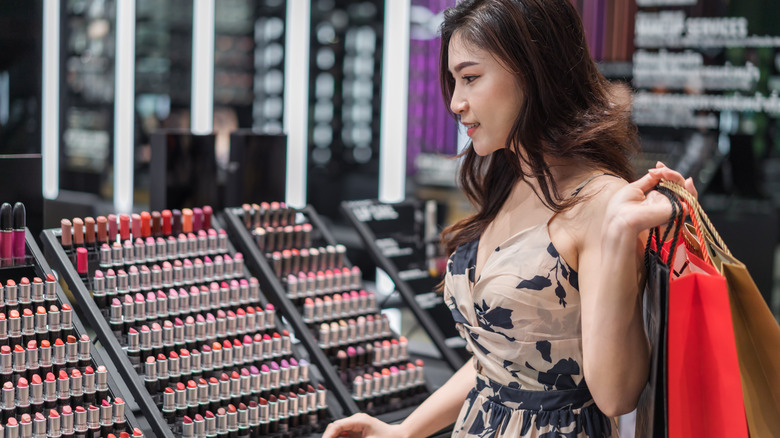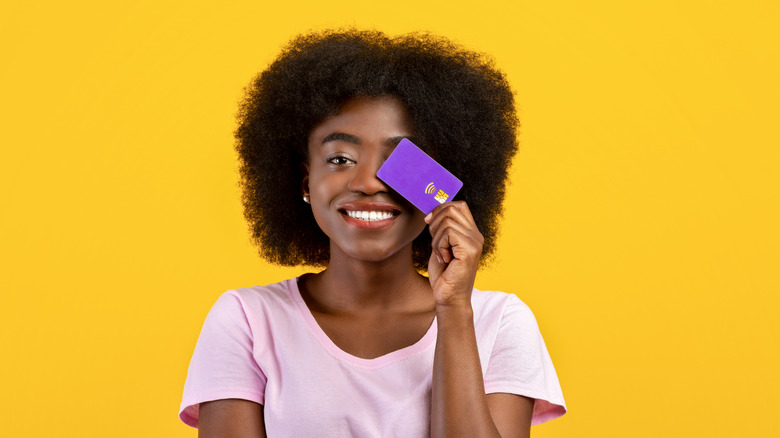What To Know About The Lipstick Effect Amid Rising Inflation
During financial hardship caused by an economic crisis such as inflation or a recession, many people have to cut some things out of their budget. Usually, these items are nonessentials, such as luxury items or a vacation. Because financial stress can also lead to emotional hardship, many consumers have found other ways to reward or uplift themselves in the midst of it all. This introduced the theory of the lipstick effect, also known as the lipstick index.
This was discovered in 1988 when economics and sociology professor Juliet Schor published her book "The Overspent American." She found that women would splurge on luxury brand lipsticks they could use at any point in time, especially in public, when they faced a financial crisis. They would buy something small like lipstick over items that are used more at home, like skincare or other types of makeup. This would give them a thrill or an emotional uplift because they were still able to treat themselves to something nice, even if it was small (via Forbes).
The lipstick effect today
After professor Juliet Schor's discovery, the lipstick effect evolved to remain consistent over time. The theory was further confirmed when Estée Lauder chairman Leonard Lauder noticed a spike in lipstick sales after the September 11, 2001, terrorist attacks in the U.S, resulting in more sales than usual. He coined the term "lipstick effect" after this observation and concluded that this was an indicator of economic distress to come. Today, it is considered a leading indicator (via The Business Professor).
A report by the NPD Group, a market research company, found that the sales of lipstick grew by 48% in the first quarter of the previous year, resulting in lipstick sales that were twice as much as other beauty products. "Lipstick is transformational," NPD vice president Larissa Jensen tells Forbes. "It's easy and quick, unlike eye makeup which takes time to apply. Lipstick is super-powerful because it can immediately transform your face unlike anything else. A simple swipe on the lips makes your face pop."
However, in a study published by Texas Christian University professors Sarah Hill and Christopher Rodenheffer, the lipstick effect was found to involve other beauty products for the simple purpose that they are small, accessible, and more affordable. The professors theorized that women feel more desire to increase their attractiveness to men during financially hard times. "Whereas exposure to recession cues decreased men's and women's desire to purchase products unrelated to appearance," they wrote in the study, "recession cues persistently increased women's desire to purchase beauty products, including lipstick."
The income effect
The lipstick effect can also be used to describe a consumer's decision to spend on less expensive things or experiences. Investopedia says the theory can also be derived from what is known as the income effect. This is where a consumer's spending habits are determined by their purchasing power resulting from a change in income. When it comes to the lipstick effect, a consumer will buy smaller luxury items because they have less income. During financial stress, the lipstick effect rises because people still want to feel the excitement of purchasing things for pleasure. When it comes to the income effect, this can also be seen beyond just lipstick or beauty products. For example, rather than taking a luxury vacation, someone might choose to go somewhere less expensive and stay only for a night.
During a recession, inflation, or other economic challenges, spending on the small stuff equates to small wins, especially when you need a happy pick-me-up. Through every hardship, financial or emotional, a small lipstick purchase will always be there to make you feel better.


